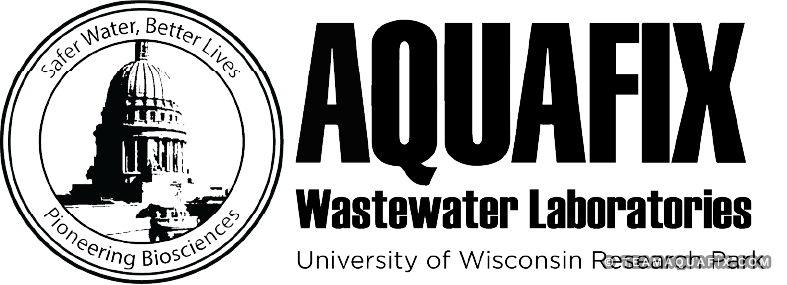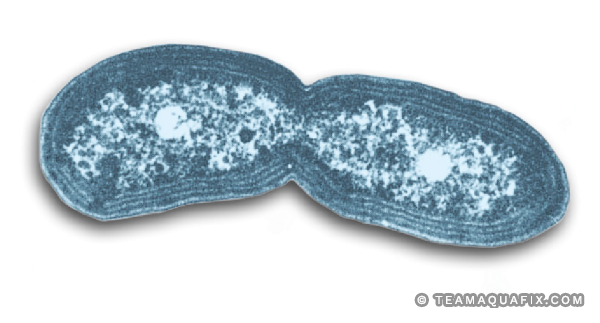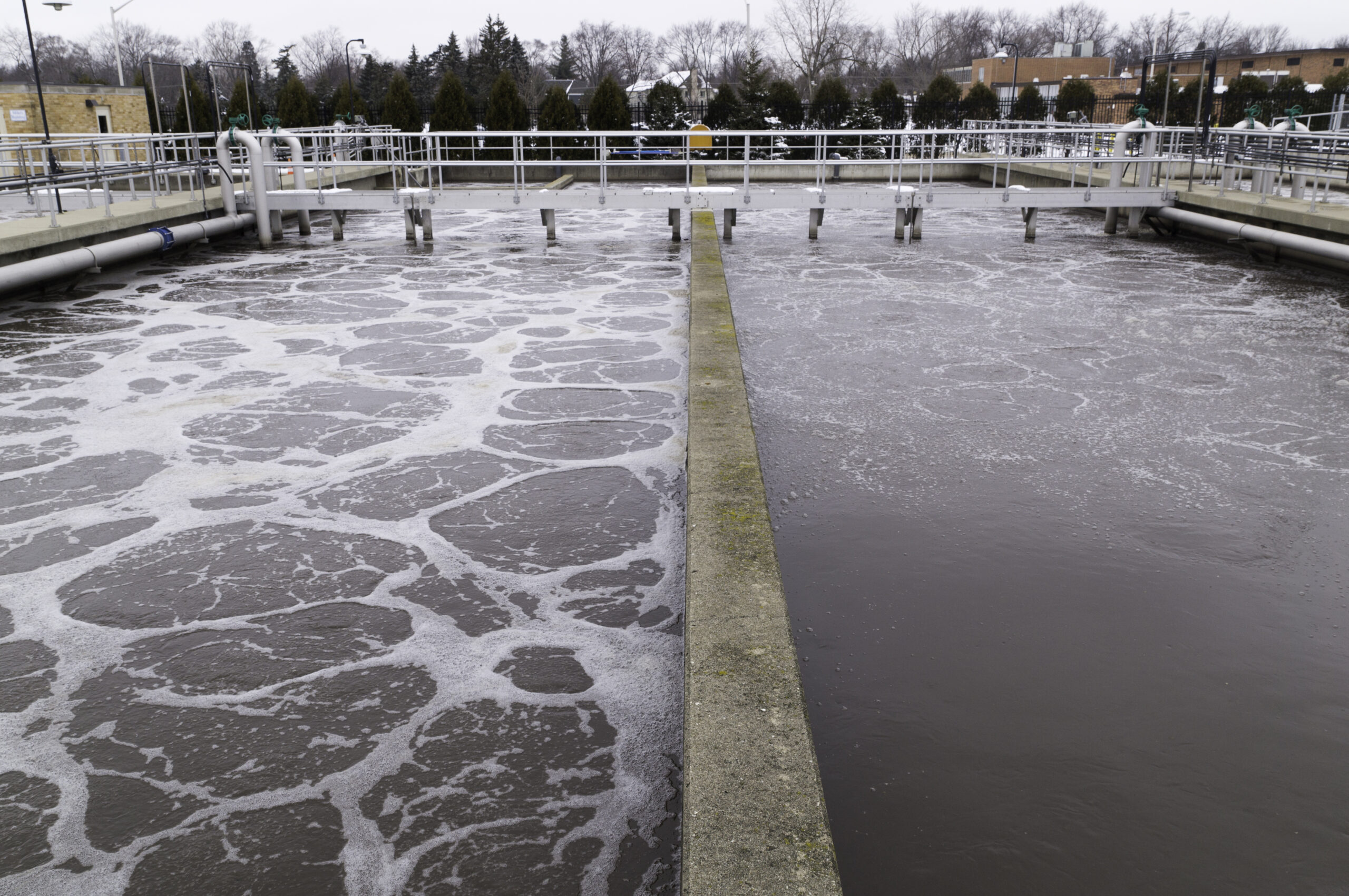
Factors Which Inhibit Nitrifying
Bacteria In Wastewater
by Deborah Lee,
Aquafix Senior Microbiologist & Nitrifier Expert
It is conventional knowledge that autotrophic ammonia-oxidizing and nitrite-oxidizing bacteria are more sensitive to toxic compounds than heterotrophic bacteria. This is a concern to wastewater treatment systems since it can result in increased effluent ammonia levels even with no other obvious signs of toxicity, such as high TSS, poor BOD removal, slimy flocs, etc. The other challenge is that there may be more than one compound in the influent that is toxic to nitrifying bacteria and the effects of more than one such compound can magnify the inhibitory effect.
Some compounds that are known to inhibit nitrifying bacteria are free metal ions, sulfur-containing compounds, and pesticides or disinfectants. It is also known that the substrates for ammonia-oxidation (ammonia, NH3-N) and nitrite-oxidation (nitrite, NO2-N) can be inhibitory at high concentrations. It has also been widely studied that high concentrations of copper ions can be inhibitory, however, some amount of copper is necessary for the function of the ammonia monooxygenase enzyme. A lot of other metal ions can replace the copper in ammonia monooxygenase but will not function the same in that enzyme and result in a buildup of ammonia. This may be part of the reason why ammonia-oxidizers are generally found to be more sensitive than nitrite-oxidizers1. A high amount of metal in the influent doesn’t always cause nitrifier inhibition because it depends on the amount of soluble metal ions and what metal ions they are2.

Nitrosomonas Europea
Metals are used in a variety of industries and not all of them will be precipitated out of the system before the aeration basin. Some ways that metal ions may enter a wastewater system include: chromium in textile and paint manufacturing 3, cadmium or mercury in batteries, and zinc in steel, rubber, fertilizers, and herbicide manufacturing 4. Inside the cell, heavy metals can interact with thiol groups and destroy protein structure and function 5. Sometimes metals enter the wastewater system as metal nanoparticles, which are used in a variety of products, especially as coatings. Nano-magnesium oxide particles are shown to increase pH to pH 9 (when pH > 9.8, nitrification was completely inhibited6) as a result of particle dissolution6. Other nano-metal particle toxicity is due to the release of the metal ion.
A common strategy to mediate inhibitory effects, especially of heavy metals, is by increasing the biomass concentration of the system. In this manner, the ratio of the inhibitor to the quantity of ammonia-oxidizers can be lowered. A lower ratio would improve the tolerance to inhibitory compounds in the treatment system7. This doesn’t always work with some metals, such as zinc since they may accumulate in the biomass and periodically release. Another problem with holding too much sludge is the probability of having more inert material and less active biomass increases.

Nitrifiers unfortunately are also more susceptible to environmental issues that cannot really be controlled. These conditions include growing even slower than normal heterotrophs (0.5-day doubling time,8 at temperatures below 10°C (50°F), washout events due to their slow growth rates, and inhibition by light exposure. Adverse environmental conditions can compound the effect of incoming inhibiting compounds and make it difficult to keep or reestablish nitrification in a system.
That being said, not all species and strains of nitrifiers are similarly affected by a given compound and site-specific conditions can also alter sensitivity to an inhibitor or combination of inhibitors. Site-specific conditions include pH, alkalinity, temperature, SRT, HRT, MLSS concentration, floc particle size distribution, previous acclimation to zinc or other similar metals, BOD/TKN ratio, and the presence of organic chelating agents, making it difficult to compare literature data1. It has also been shown that starvation conditions or having nitrifiers in a lowered metabolic state can somewhat protect cells from some nitrification inhibitors. This may be because, during exponential growth, the cells may have much higher active uptake of metals (e.g. Cd2+) or other inhibitory compounds than during stationary or starvation conditions. In biofilms, cells are protected by a slime matrix, and often have a slower metabolism, both of which have also been shown to protect cells9.
At Aquafix, we grow our nitrifying bacteria ourselves to ensure quality. This process takes a long time and the bacteria may also be finicky with temperature, pH, and loading rates. Our nitrifying bacteria cultivation process took a long time to optimize over the years and many other companies may not be as willing to make that sort of investment. If you have any questions about our nitrifying bacteria don’t hesitate to contact us to talk about it more!

About the Author
Deborah Lee is a Senior Microbiologist at Aquafix with 11 years of experience studying nitrifying bacteria. Deborah works with our wastewater clients to understand nitrifier populations and how to improve them. Deborah also oversees the production of nitrifying bacteria at Aquafix.
[1] Fox, J.T., Brandriff, C.J., & Bott, C.B. (2006). Assessing the Potential for Nitrification Inhibition at Wastewater Treatment Facilities as a Result of Zinc Orthophosphate addition to potable water distribution systems. WEFTEC .06 (2006 Water Environment Foundation) 6593-6622.
[2] You, S.J., Tsai, Y.P., & Huang, R.Y. (2008). Effect of heavy metals on nitrification performance in different activated sludge processes. Journal of Hazardous Materials. Doi:10.1016/j.jhazmat.2008.10.112.
[3] Kapoor, V., Li, X., Elk, M., Chandran, K., Impellitteri, C.A., & Santo Domingo, J.W. (2015). Impact of Heavy Metals on Transcriptional and Physiological Activity of Nitrifying Bacteria. Environ. Sci. Technol. 49(22):13454-13462.
[4] Radniecki, T.S. & Ely, R.L. (2008). Zinc Chloride Inhibition of Nitrosococcus mobilis. Biotechnology and Bioengineering 99(5):1085-1095.
[5] Hu, Z., Chandran, K., Grasso, D., & Smets, B. (2002). Effect of Nickel and Cadmium Speciation on Nitrification Inhibition. Environmental Science and Technology 36:3074-3078.
[6] Liu, G. & Wang, J. (2012). Effects of Nano-Copper(II) Oxide and Nano-Magnesium Oxide Particles on Activated Sludge. Water Environment Research 84(7):569-576.
[7] Lee, S., Cho, K., Lim, J., Kim, W., & Hwang, S. (2011). Acclimation and activity of ammonia-oxidizing bacteria with respect to variations in zinc concentration, temperature, and microbial population. Bioresource Technology 102:4196-4203.
[8] Park, S. & Ely, R.L. (2008). Candidate Stress Genes of Nitrosomonas europaea for Monitoring Inhibition of Nitrification by Heavy Metals. Applied and Environmental Microbiology. 74(17):5475-5482.
[9] Lauchnor, E.G. & Semprini, L. (2013). Inhibition of phenol on the rates of ammonia oxidation by Nitrosomonas europaea grown under batch, continuous fed, and biofilm conditions. Water Research 47(13):4692-4700.
